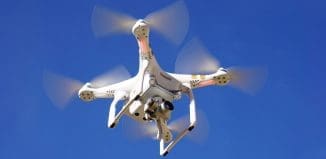Blackout? UUV and UAS robots can help
This post is also available in:  עברית (Hebrew)
עברית (Hebrew)

Big disasters almost always result in big power failures. Not only do they take down home appliances, they also wreak havoc with key infrastructure like cell towers. That can delay search and rescue operations at a time when minutes count. Now, researchers led by Nina Mahmoudian of Michigan Technological University has developed a tabletop model of a robot team that can bring power to places that need it the most. In addition to disaster recovery, their autonomous power distribution system could have military uses, particularly for Special Forces on covert missions.
“If we can regain power in communication towers, then we can find the people we need to rescue,” says Mahmoudian, an assistant professor of mechanical engineering. “Unfortunately, cell towers are often located in hard-to-reach places,” she says. “If we could deploy robots there, that would be the first step toward recovery.”
Unmanned systems conference 2014 – Israel
The team has programmed robots to restore power in small electrical networks, linking up power cords and batteries to light a little lamp or set a flag to waving with a small electrical motor. The robots operate independently, choosing the shortest path and avoiding obstacles, just as you would want them to if they were hooking up an emergency power source to a cell tower. “Our robots can carry batteries, or possibly a photovoltaic system or a generator,” Mahmoudian said.
The team is also working with Wayne Weaver, the Dave House Associate Professor of Electrical Engineering, to incorporate a power converter, since different systems and countries have different electrical requirements.
In addition to disaster recovery, their autonomous power distribution system could have military uses, particularly for Special Forces on covert missions. “We could set up power systems before the soldiers arrive on site, so they wouldn’t have to carry all this heavy stuff,” said Mahmoudian.
The robots could also recharge one another, an application that would be as attractive under the ocean as on land.




























